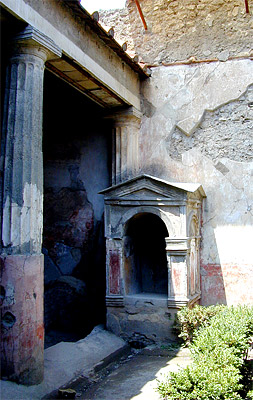
Reading this book made me think of Fritz Graf’s office. A few years ago, when I was slightly-haggard but still fresh from a Master’s program, I met with one of my professors, Dr. Graf, in his office to talk about some of my research interests. Back in those days, I was super-excited about all things liminal (crossroads, gates, thresholds, boundaries) and the religious prescriptions associated with them. Dr. Graf gave me a reading list to investigate and near the top was anthropologist Mary Douglas’ Purity and Danger (1966).
The reason I bring this memory up is because I thought China Mieville’s new novel, The City and the City, perfectly actualized some of the main tenants in Mary Douglas’ study, especially her concept of symbolic boundary-maintenance and place. In Purity and Danger, Douglas explored concepts of taboo and the unclean. Her stance was basically this: we all view the world through a culturally specific paradigm, a framework that makes up the shape of our worlds. Within this framework, everything has its place. Order is created. This order can refer to many things; for example, it can be of a more symbolic social nature or a concrete physical one.

Think Julia Roberts in Pretty Woman when she couldn’t get help to buy clothes on Rodeo Drive because she didn't look up to snuff. Think of the weird feeling you would get if your garden rake and shovel were stored next to your bed. Or if someone set up a hotdog stand on top of somebody’s grave in a cemetery, and people lined up amongst the headstones to get French fries with that. What if there was a white polar bear running loose on a tropical island?

When things are not in their proper place, disorder reigns. And disorder makes people and groups of people highly uneasy. This is especially true if something is neither on one side of a boundary nor on the other, but in-between. That, apparently, is the ultimate in sketchiness. Because (Douglas and many others would argue),* if you can’t put something into a certain category or place, the framework starts to tremble, plaster falls from its ceiling, cracks appear in its walls. It makes people upset.
~Massive Spoilers Henceforth~
And so we come back to China Mieville. His new book is a detective novel, one that is read widely in Sci-Fi/Fantasy circles even though some cry that it is NOT Sci-Fi/Fantasy. The story follows an investigator (Borlu) who is trying to solve the murder of a young archaeologist (eep!). But ever so slowly Mieville’s description of the city in which the action occurs (Beszel) becomes increasingly strange, as his protagonist talks of ‘unseeing’ buildings and vehicles and even people. Borlu’s thoughts shy away from pedestrians he passes on the street who aren’t there. There is reference to another city within Beszel, and I have to say I struggled for some time with whether or not this other place (Ul Qoma) was real - a ghost city, a magic vision, an echo of the past imprinted on the present? Eventually it becomes clear – and here I am spoilering the main premise of the book so stop reading while you can – that the physical space of the city is split between TWO cities, two social and political entities that stand directly next to each other, intertwine and overlap. It’s as if West Berlin had pieces of itself beyond the Wall and some neighborhoods of East Berlin had been left on the West’s side. The citizens of Mieville's two cities have learned to recognize an incredibly complex and nuanced series of symbols – in architecture, in clothing styles, in accents, in sounds, even down to human ways of walking - that indicate whether a person is in their own city or not. Identity and categorical signifies are crucial. Everyone and everything from the ‘foreign’ city must be ignored, unseen, unheard.

How is this ‘unseeing’ policed? By Breach, an interstitial bureau that stands (figuratively, not physically) between the two cities in its own liminal zone. The officers of ‘Breach’ maintain order by disappearing those who illegally cross the boundaries between the two places, whether by standing on the street and talking to a person in the other city or by accidentally walking into an abandoned lot that belongs to the other city. Breach exists to patrol the interstices.
The entire world that Mieville has so richly created is mind-bending. The ‘secret’ is ultimately revealed when the reader understands the shape of the world; when the reader gleans that the order of Mieville’s paradigm is a strange but deeply seated social construction that actually affects the way his characters process sensory data. At the end of the book, the city’s entire framework nearly collapses as the borders and boundaries dissolve. Mieville’s most outstanding moment comes when one particular character (the bad guy) has disguised himself in a way that hides those categorical signifiers that keep everything in place. No one can tell which city the bad guy is in, making him a devastating threat that no one can acknowledge. Around him people look, glance away, become confused, leave in great discomfort and distress - afraid that they are (but unsure if they are) ‘breaching.’ The danger this person poses is profound, taboo via failure to maintain place and boundary.
To me The City and the City took place inside Purity and Danger. The one illuminates the concepts of the other, although Mieville succeeded in doing so without all of Mary Douglas’ dirt. Incidentally, Mieville actually has a Bachelor’s in Social Anthropology from Cambridge. Of course, I was also happy to see the role of archaeology in the book, with professors at the excavation (in Ul Qoma) talking of stratigraphical inconsistencies and the Harris Matrix. (As an aside, Mieville never wrapped up a mystery involving the antiquities and the ancient culture they were excavating – I find this intensely bothersome. Still.)
In the end, I feel like The City and The City is one of those books that changes the shape inside your head. In many ways, the story was way too slow and the plot was rather a letdown. But perhaps that is the point. Halfway through you’re convinced and paranoid that there’s a mystical ghost city with a fantastical ancient past; you’re sure that there’s a huge Lost-worthy reveal waiting around the corner for the frantic characters. You think, in fact, that you’re reading something that fits the usual pattern of Sci-Fi/Fantasy. But then, when the who-dunnit arrives, it’s mundane, disappointing, pedestrian. It’s so…normal. Maybe, after all, you had interpreted all the Sci-Fi signifiers incorrectly. Maybe you were really just reading a detective story all along and didn’t know it. And perhaps that is the brilliance of Mieville’s effort, that not only does he disorient his characters amongst the symbolic boundaries of his Two Cities, but his readers are lost too, but this time in the interstices of genre.
* For some other biblio cf., A. van Gennep, The Rites of Passage (1909; Chicago 1960); S. Johnston, “Crossroads,” ZPE 88 (1991), 217-224; C. Faraone, Talismans and Trojan Horses: Guardian Statues in Ancient Greek Myth and Ritual (Oxford 1992).


















